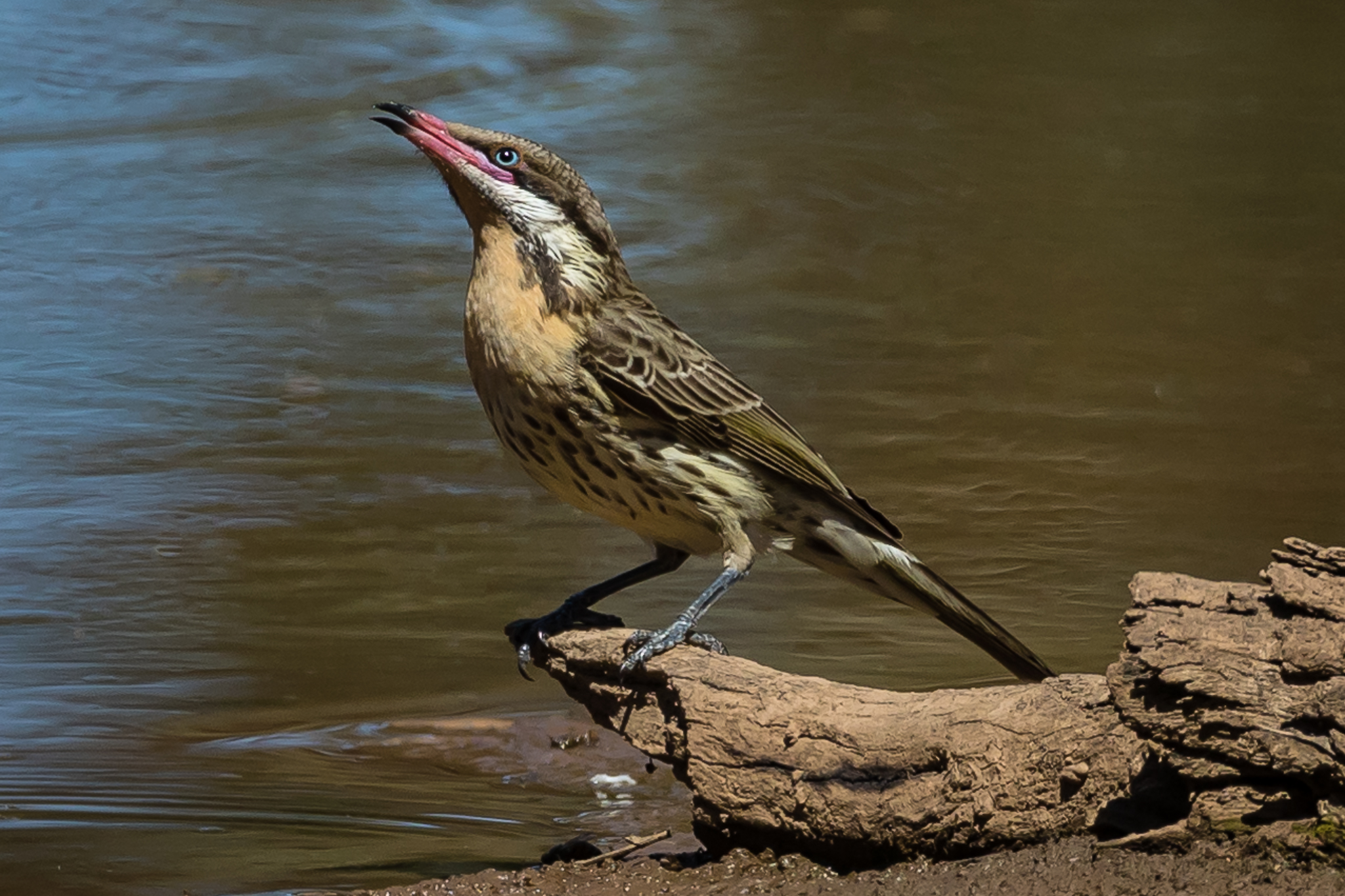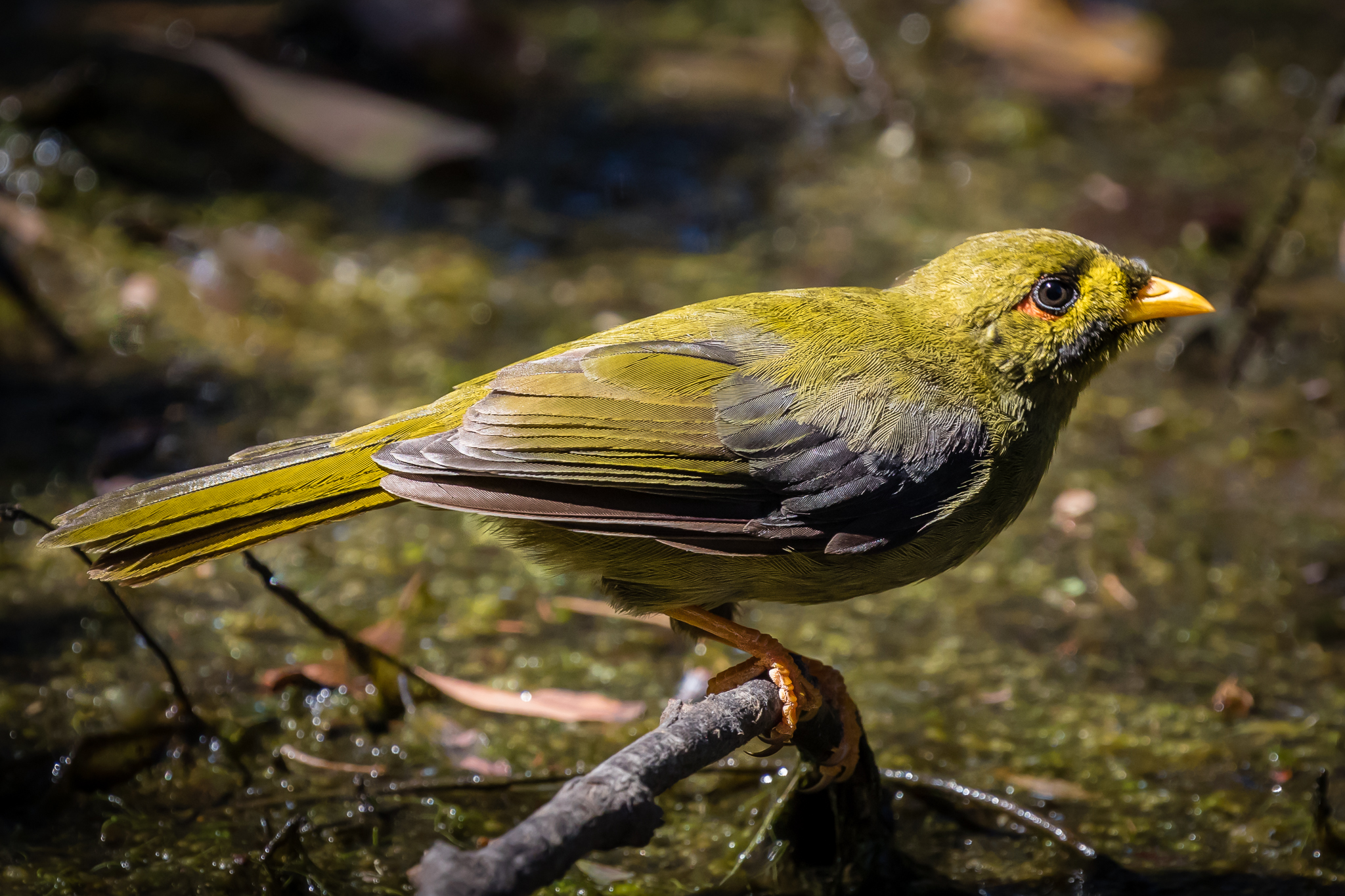Australian Honeyeaters
Australian Honeyeaters belong to the Meliphagidae family which has 187 species, 78 of which are found in Australia. These include: the Australian chats, myzomelas, spinebills, friarbirds, wattlebirds, and the miners. Many have a brush-tipped tongue to collect nectar from flowers. They also eat insects, pollen, berries and manna. Honeyeaters can be very aggressive in their quest for the rich sources of sugar provided by Eucalypts and other Australian trees.
Photo: The Spiny-cheeked Honeyeater (25 cm in length) is seen in dry woodlands; feeding on nectar, fruit and insects in the mallee and acacia across non-tropical inland Australia.
The New Holland Honeyeater (18 cm) is one of the most common on Australia’s southern coasts. They are aggressive honey consumers, here enjoying nectar from a Banskia flower.
The Eastern Spinebill (16 cm) hovers hummingbird-like to feed on nectar in a suburban garden. Common in Australia's south-east coast gardens, forests and heaths.
The Red-headed Honeyeater (12 cm) lives in mangroves, swamps and forests of the tropical north. One of three Australian members of the Myzomela family, all small and acrobatic birds.
The Blue-faced Honeyeater (31 cm) ranges from the north and east to South Australia. In open woodlands to river edges and mangroves. An aggressive feeder of nectar, fruit and insects.
The Bell Miner (20 cm) is named for its beautiful bell-like call. But like the Noisy Miner it is an aggressive and territorial coloniser taking over from other species.
The Noisy Miner (28 cm), one of the most aggressive of Australia’s birds, now dominates many park-like and farm habitats where the low scrub of the woodlands and forest have been cleared.
The Yellow-throated Miner (28 cm) of inland and western Australia; in the woodlands and grasslands, feeding more on insects than nectar.
The Scarlet Honeyeater (11 cm), another of the Myzomela family, is seen in the forests, swamps and heaths of east coast Australia.
The Little Wattlebird (35 cm) is one of the large honeyeaters that dominate south-eastern gardens that have shrubs with large native flowers such as grevilleas and bottle-brushes.
The Noisy Friarbird (35 cm), one of four Australian Friarbirds, is loud and aggressive with its bare black head and casque. Feed on: nectar, lerps and manna
The elegant Regent Honeyeater (23 cm) was once common across south-east Australia but is now endangered with only a few hundred remaining, supplemented by conservation birds bred in captivity.
The Striped Honeyeater (25 cm) is a citizen of Australia's eastern inland arid forests and woodlands. Feeds on insects, seeds and fruit as well as nectar.
Singing Honeyeaters (22 cm) are seen Australia wide. They inhabit the woodlands and scrublands feeding on berries, nectar and insects.
The Brown-headed Honeyeater (14 cm) inhabits the southern states extending to southern Queensland.
The Silver-crowned Friarbird (32 cm) is found in the drier habitats of far north of Australia, an aggressive nectar eater.
A young Tawny-crowned Honeyeater (17 cm). Found in the heathlands of the southern fringes of Australia. Gathers nectar from wildflowers and eater of insects.
The Banded Honeyeater (14 cm) lives in forests and woodlands of far north Australia, feeding in eucalypts and paperbarks.
The closely related Black Honeyeater (12 cm) is found in semi-arid regions, from Western Australia to NSW, feeding on insects and nectar.
The Little Friarbird (30 cm) sports greyish-blue facial skin. An aggressive and noisy feeder on nectar across northern and eastern Australia.
Large flocks of Yellow-faced Honeyeaters (18 cm) migrate north from Victoria and New South Wales each autumn to return in spring. Feed on nectar and insects in forests, woodlands, heath and mangroves.
White-gaped Honeyeaters (22 cm) live in the swamps and mangroves of the far north. They feed on insects, spiders and nectar.
The White-plumed Honeyeater (17 cm) is widespread across Australia’s woodlands, mallees and inland rivers. Feed on nectars and insects.
The Rufous-throated Honeyeater (14 cm) lives in the forests and woodlands of north Australia. They feed on nectar and insects which they take on the wing.
The Yellow-tinted Honeyeater (17 cm) prefers woodlands near water across the Kimberley and Northern Territory. They feed on insects and nectar.
The White-eared Honeyeater (22 cm) is found in southern and eastern Australia across dry eucalypt woodlands and inland scrub. They feed predominantly on insects.
White-naped Honeyeaters (15 cm) live in the forests and woodlands of eastern and south-western Australia.They feed on nectar, insects, manna and honey-dew.
The Brown Honeyeater (16 cm) is distributed across the west, north and north-east of Australia. Its territory extends to Bali, the only member of the honeyeater family that far west.
The White-cheeked Honeyeater (19 cm) has two sub-species, one found in the south-west corner of Australia (the bird-pictured) and the other on the east coast.
Lewin's Honeyeater (22 cm) frequents the wetter forests of Australia's eastern coast. They forage for insects in tree bark as well as nectar and fruits.
The beautiful and rare Painted Honeyeater (16 cm) ranges from inland Victoria to the Northern Territory. It depends on diminishing stocks of the Grey Mistletoe for its food.
This Rufous-banded Honeyeater (13 cm) is looking for insects in a tropical marshland. A resident of northern Australia and New Guinea.
The White-fronted Chat (13 cm) is found in the lakes, estuaries and marshes of southern states of Australia.
































